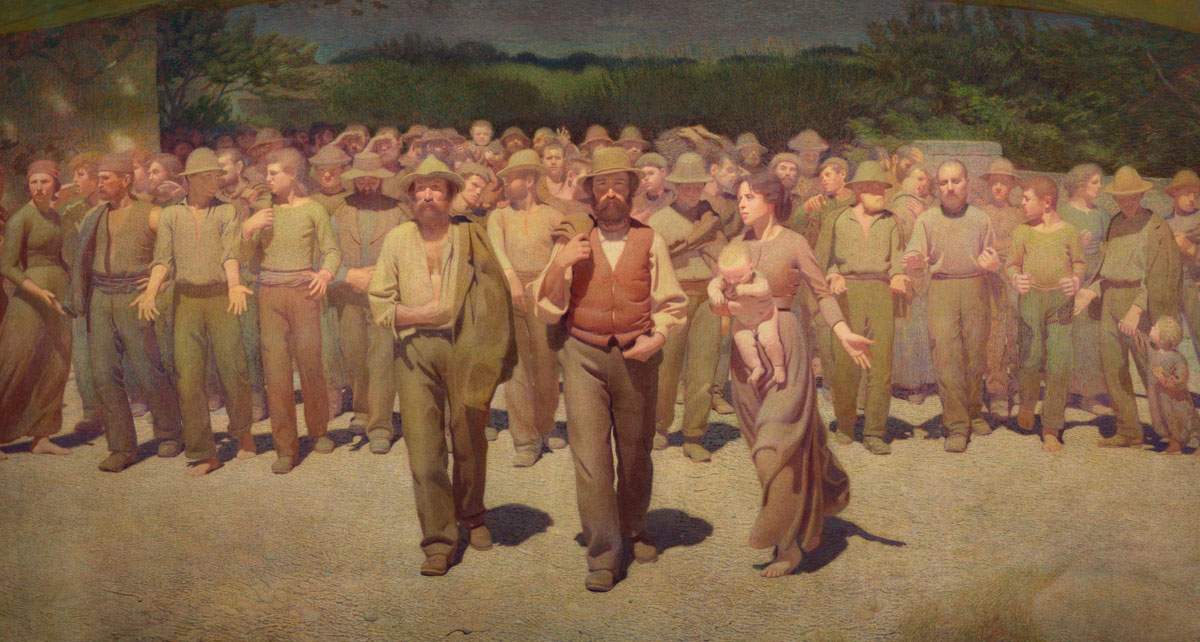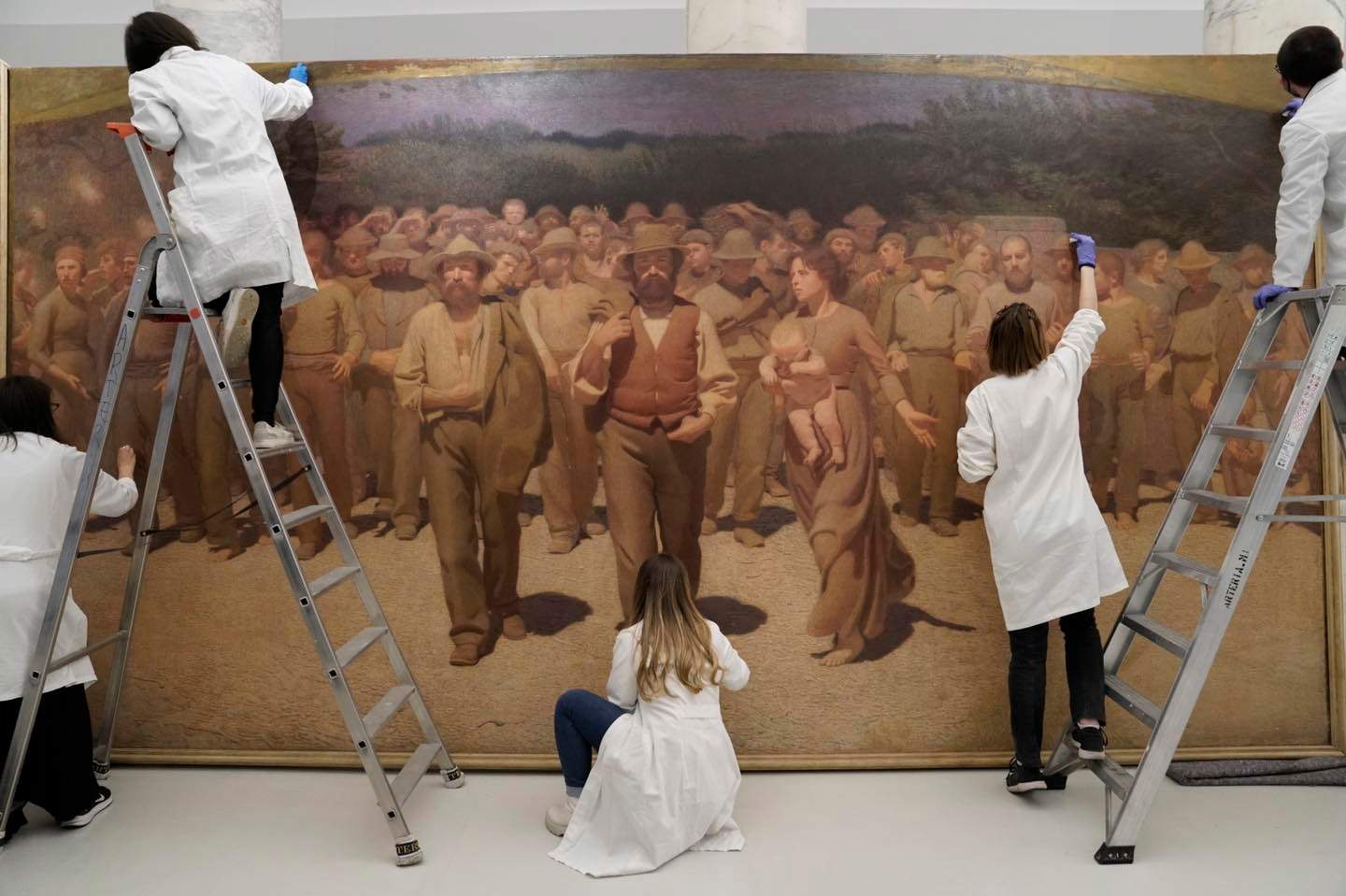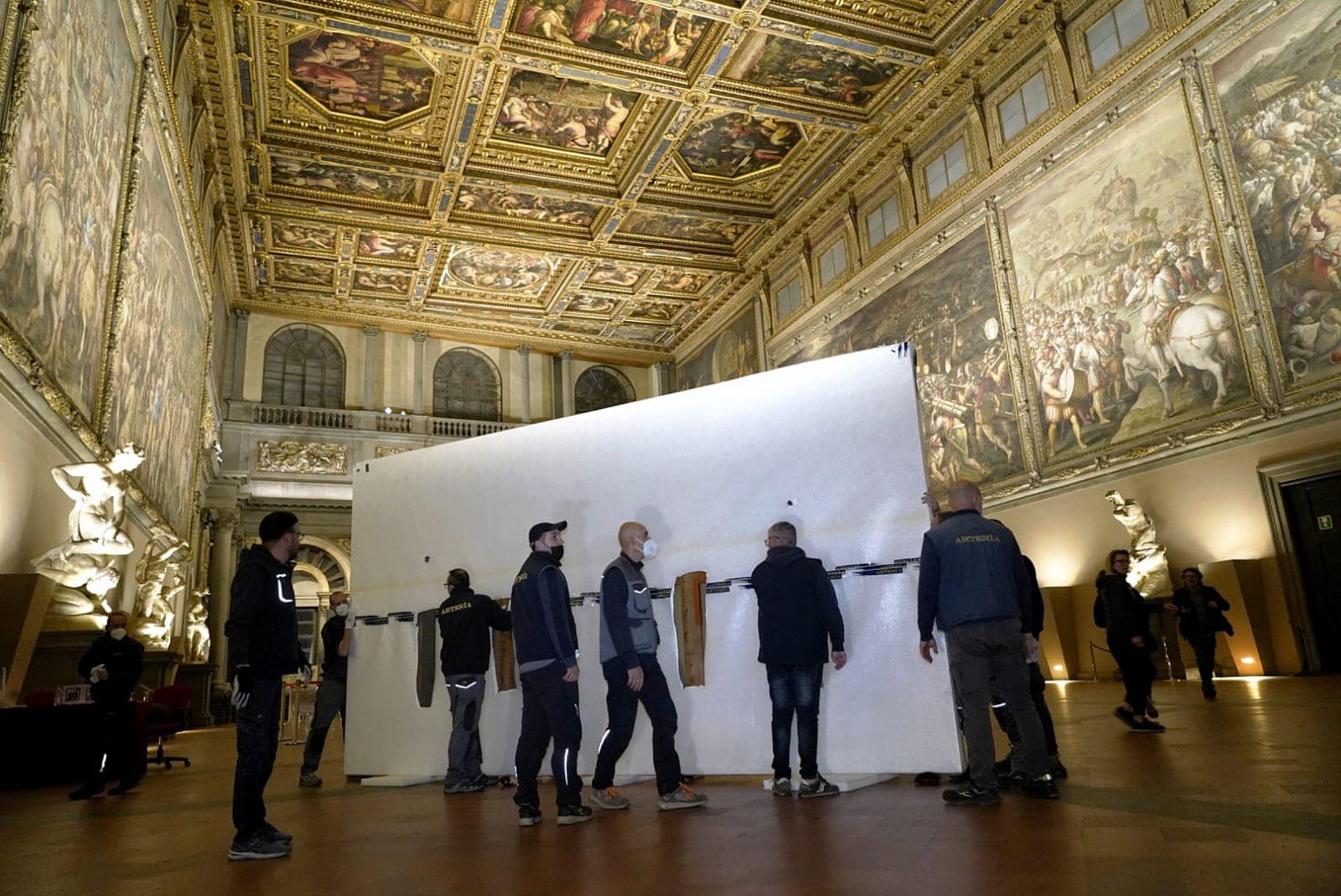The best comment is from a user of Florence Mayor Dario Nardella’s Facebook page: refrain from any rhetoric about workers’ struggles, and simply state the time and place of the exhibition with times, ticket costs and possible reductions. On the phrasing that has already begun to accompany the temporary relocation of Giuseppe Pellizza da Volpedo’s Fourth Estate, for that matter, one could say anything: we will simply note how this loan, which will be presented tomorrow as part of a meeting with Labor Minister Andrea Orlando and Milan Mayor Giuseppe Sala, comes at an altogether singular time, with the grassroots unions having just a few days ago proclaimed a general strike for May 20 against the war and against a government that, heedless of the opinion of what all polls indicate is the vast majority of the country, continues undaunted and obstinate in its bellicose drift, with the workers of Milan’s civic museums who went into a state of agitation at the end of March over the contract on reception, and more generally with cultural workers all over Italy, including Florence, who, as certified by professional associations, are clamoring for better working conditions. What can the Fourth Estate say in this context? Absolutely nothing, if it is to become “yet another risky and useless publicity stunt,” as the association Mi Riconosci points out. A Fourth Estate by Pellizza da Volpedo that “bursts with its profound political and social significance within the Renaissance setting that adorns the monumental Salone dei Cinquecento,” as the press release states, is more eloquent if it says nothing. Let the painting remain mute and astonished before its sad fate as a commercial icon and political tool: it is for the best.
Therefore, it will be better to drop the rhetoric and focus on the aspects that concern the operation itself. Meanwhile, what sense does it make to move the Fourth Estate from Milan to Florence to exhibit it in the Salone dei Cinquecento, in what appears more like an exhibition (for a fee of course, except on May 1 when the work will be shown free of charge to Florentines and tourists: too much grace) than as an opportunity for cultural insight? The question could also be answered without dwelling on the jarring contrast between Pellizza’s march of the workers and that of Cosimo I’s army subduing his enemies by force in Vasari’s frescoes, a contrast that alone would be enough to dispel any doubts about the publicity nature of the operation: it is a meaningless shift because there is no exhibition in Florence to justify it, and because the abstract idea of celebrating Labor Day on May 1 alone cannot stand as a valid reason. On the contrary, it sets a rather dangerous precedent, because if an annual anniversary becomes capable of clearing the way for the displacement of masterpieces of supreme importance (although the city of Milan, with its Christmas exhibitions, has set the standard in this regard), then potentially there are no longer any limits to the travel of works of art. A work of art, however, should travel only if the move is motivated by serious, impeccable, high-level scientific projects: with the journey from Milan to Florence of the Fourth Estate, which, writes the Museum of the Twentieth Century in Milan, “comes out of its display case on the occasion of May Day” to “share the message of strength and hope that emanates from the silent and compact march” depicted in the painting, another barrier against reckless travel is sanctioned. Because there is simply no sound scientific rationale to support it.
It is also laughable why, as the statement says, “the presence of the work in Florence until June 30 finds its historical and artistic justification precisely in the biographical events of the artist who stayed here while attending the Academy of Fine Arts, under the teaching of Giovanni Fattori, coming into contact with masterpieces of the past and studying modern artistic techniques.” if the presence of an artist in a city at a given historical moment becomes a valid pretext for moving works of art, then Carrara should at the very least demand Michelangelo’s Vatican Pieta. Indeed, it would be a even more sensible move than moving the Fourth Estate to Florence. And of course, granting the Florentines the right to see the work is not a valid reason: one would not otherwise see why deny, for example, Michelangelo’s David to the Milanese, Botticelli’s Primavera to the people of Ancona, or Donatello’s Judith to the people of Catania.





Then there is another reason that should have held back the move, which is the fact that the Fourth Estate is perhaps the most important and well-known work in the Museo del Novecento. It is like the Uffizi sending Botticelli’s Venus on loan, or like the Galleria Borghese momentarily depriving itself of Bernini’sApollo and Daphne. They are, in essence, the works that any visitor to their respective museums expects to find when he or she walks through the entrance; they are the works that many call “identity” works, without which the institutions temporarily lose some of the prestige they enjoy with the public. And reason suggests that they should move as little as possible. A Florentine who wants to see the Fourth Estate takes little more than two hours by public transportation (six for those who want to save money by using regional trains) to see his or her wish fulfilled. And perhaps already that he is in Milan he sees even more. The trend, however, even in this case seems marked: a few weeks ago, just to mention the latest case, Raphael’s Fornarina left Palazzo Barberini in the direction of London. But at least in that case the transfer was motivated by the painting’s participation in an important exhibition at the National Gallery. In the case of the Fourth Estate, however, there is not even that reason to support the trip, so much so that many Milanese (just read the comments on social media) did not welcome the news, and now Milan expects Florence to reciprocate with a work of equal value. One unreasonable trip always beckons another equally unreasonable one for simple reasons of returning the favor, and even if the transportation of works of art takes place in the utmost safety, a move of a painting or sculpture is never a risk-free activity.
Finally, the barrier on the work itself falls. The Fourth Estate was bought in 1920, for the sum of fifty thousand liras, with resources that the Milanese made available through a popular subscription, and was placed in the Castello Sforzesco. Under Fascism it ended up in storage, and in the 1950s, thanks in part to the rediscovery of Pellizza da Volpedo, the work re-emerged and was placed in the Sala della Giunta of Palazzo Marino for its symbolic value, and was then moved to the Galleria d’Arte Moderna in 1980 and finally, in 2010 to the Museo del Novecento. In its 100-year history, the work has rarely moved from Milan: most notably, two trips in 2001, one to Volpedo on the occasion of the centenary of its creation, and the other to Rome for the exhibition Italie 1880-1910 at the Galleria Nazionale d’Arte Moderna e Contemporanea. And as long as the move is motivated by scientific reasons, it may be fine: if, on the other hand, the Fourth Estate is moved for political reasons, it would be delicate and appropriate, given that by virtue of its history it is literally a work that belongs to all the Milanese, to at least open a public discussion with the city instead of communicating the move when the decision has already been made and imposed on the citizens.
Those same citizens to whom, in an expanded perspective, Giuseppe Pellizza da Volpedo’s painting looks. On Nov. 18, 1905, the artist wrote to journalist Ernesto Majocchi rejoicing at the imminent publication of his painting in a postcard for the magazine L’uomo che ride, because then the idea behind the painting would spread “among the strong workers to animate them to continue confidently toward an ideal of well-meaning equity in the distribution of social wealth.” And if the displacement of a painting of such high symbolic value is imposed from above as a meaningless operation, one has to wonder how much the spirit that animated the painter is really still understood.
Warning: the translation into English of the original Italian article was created using automatic tools. We undertake to review all articles, but we do not guarantee the total absence of inaccuracies in the translation due to the program. You can find the original by clicking on the ITA button. If you find any mistake,please contact us.